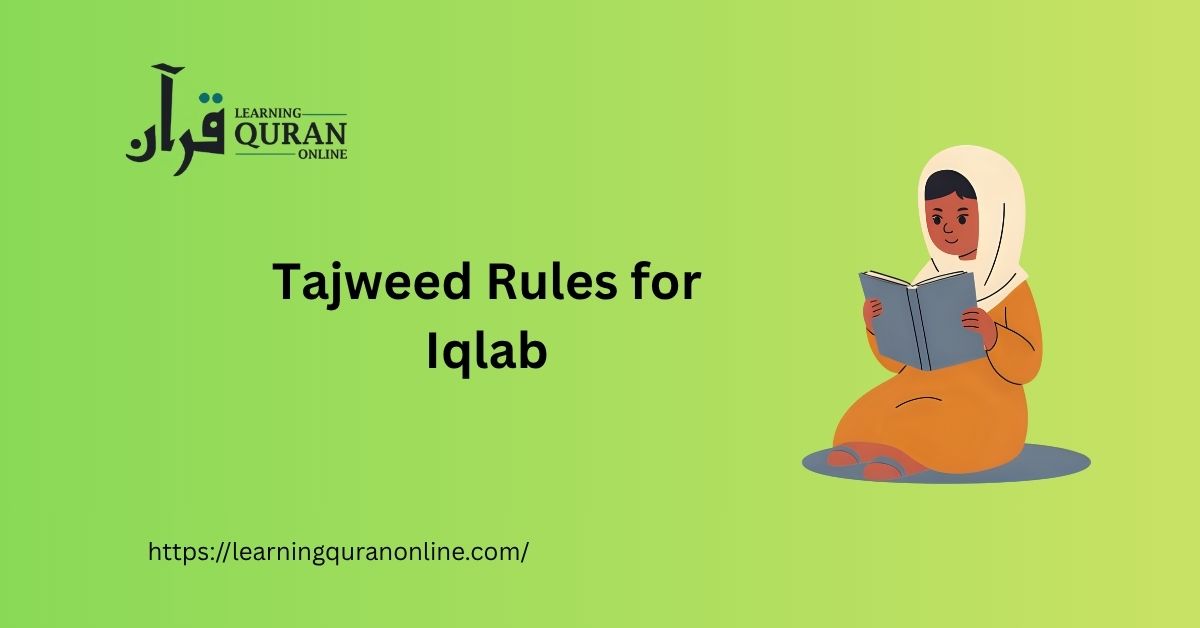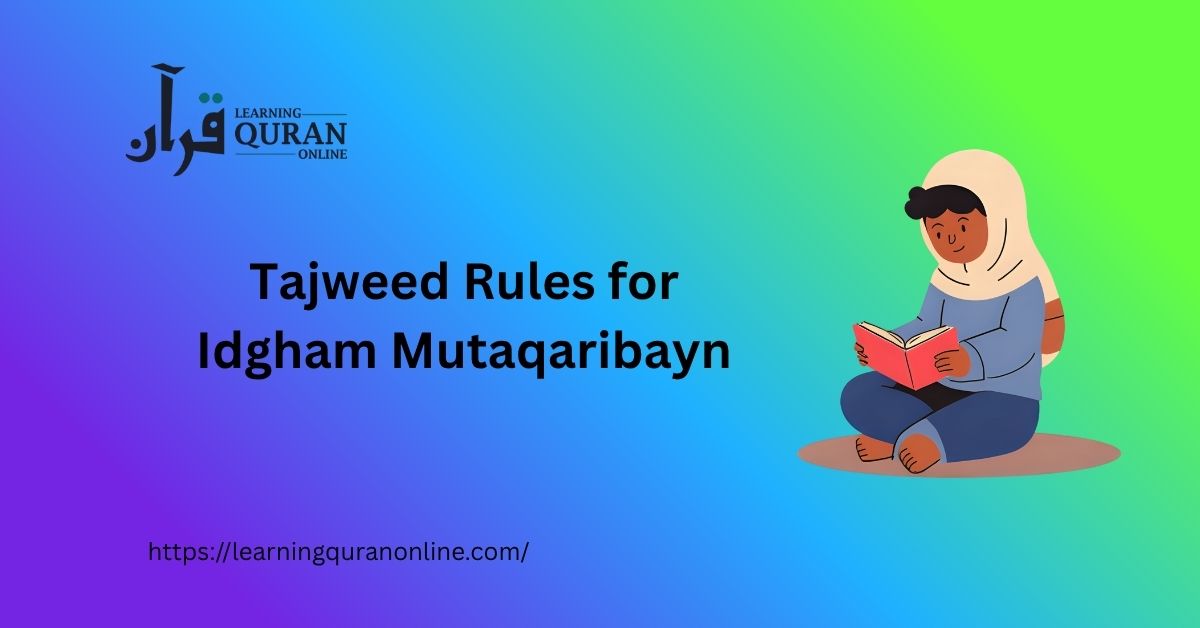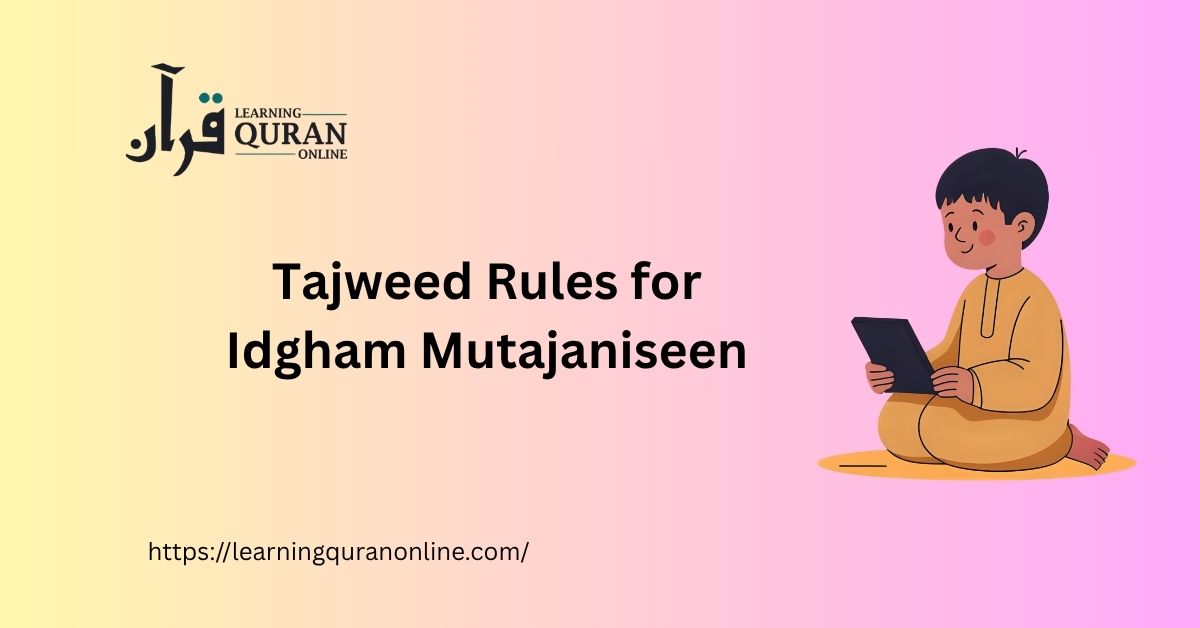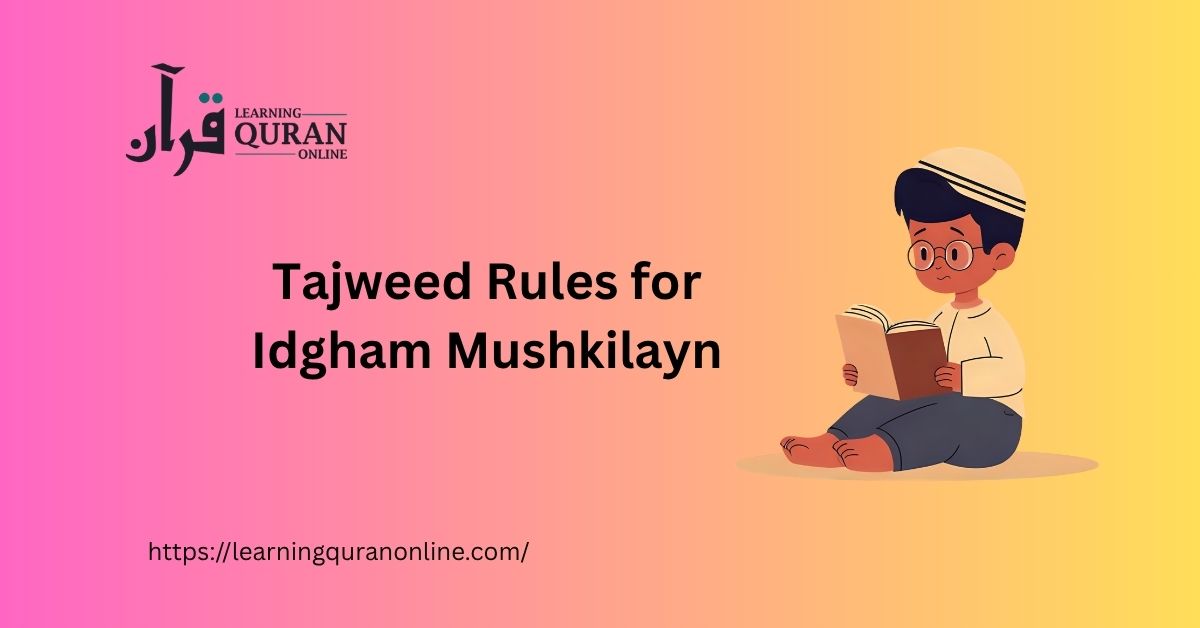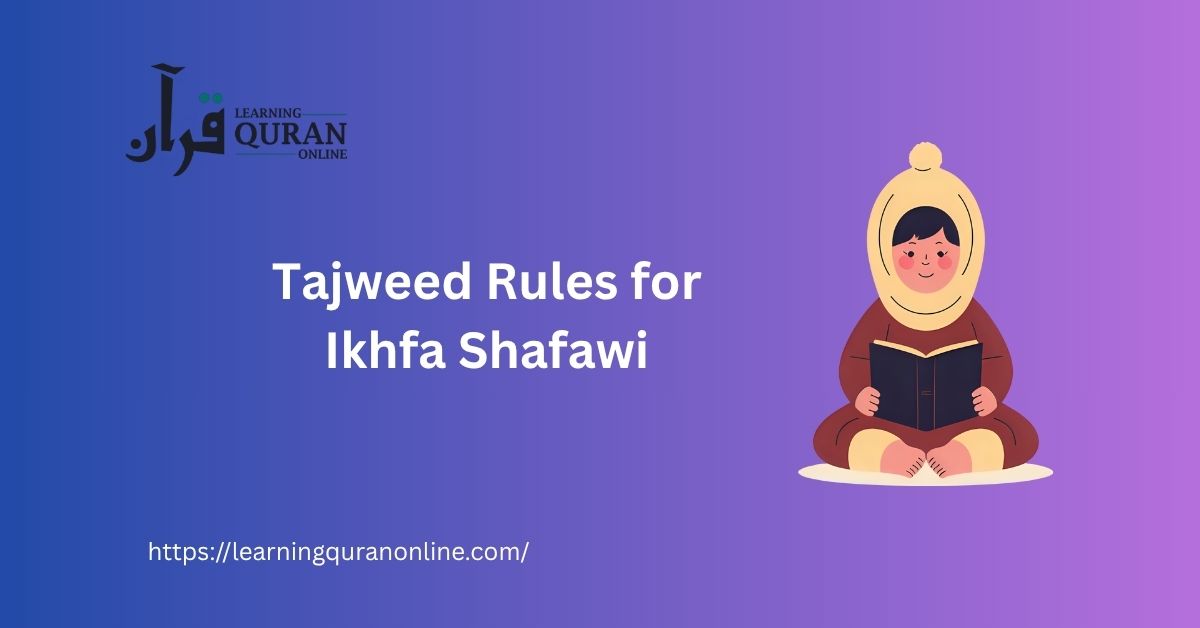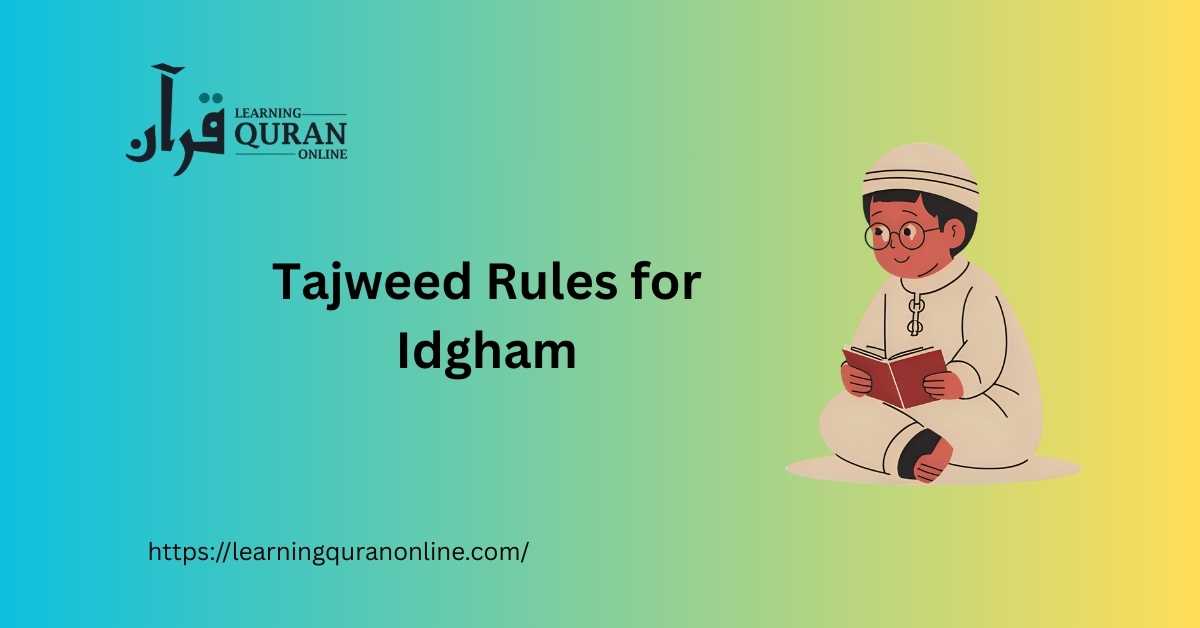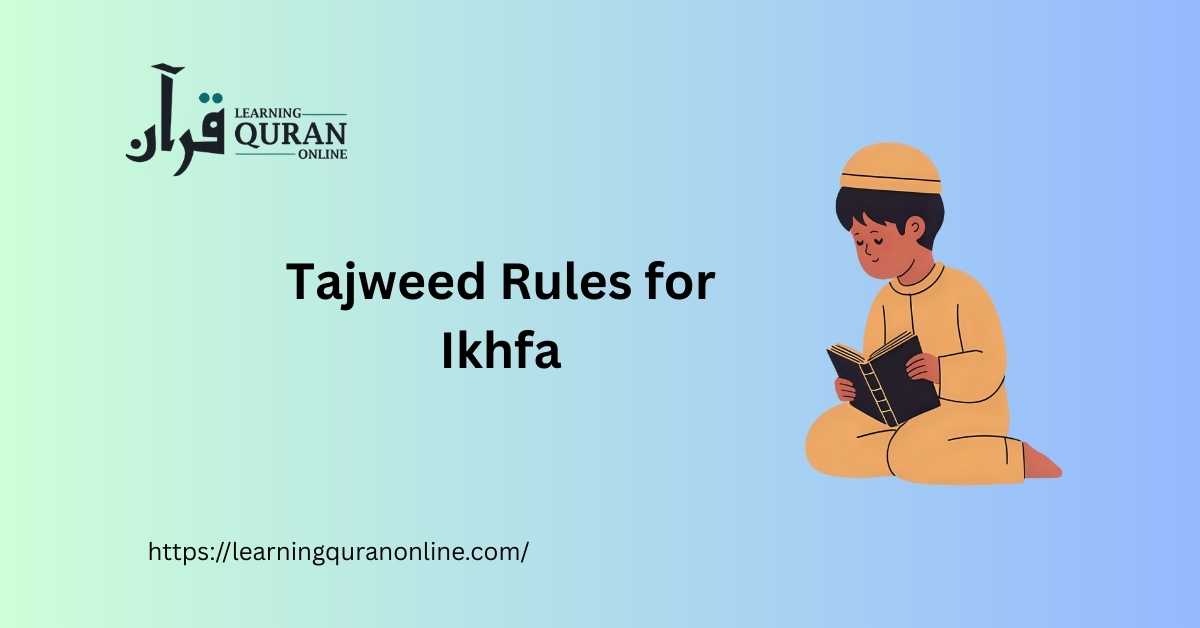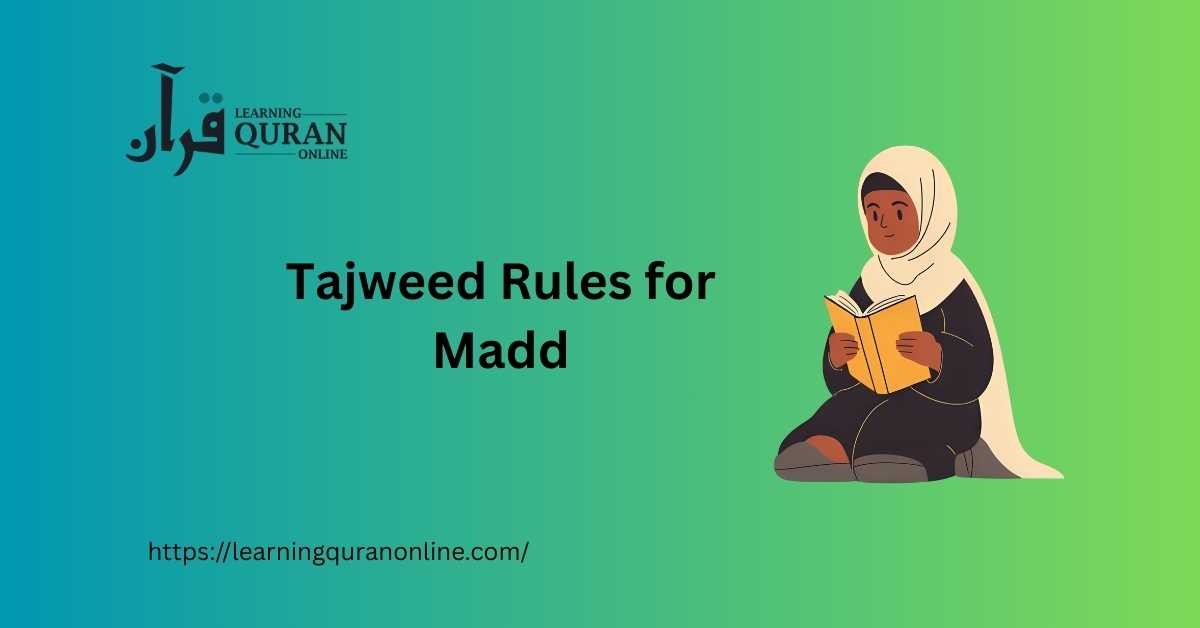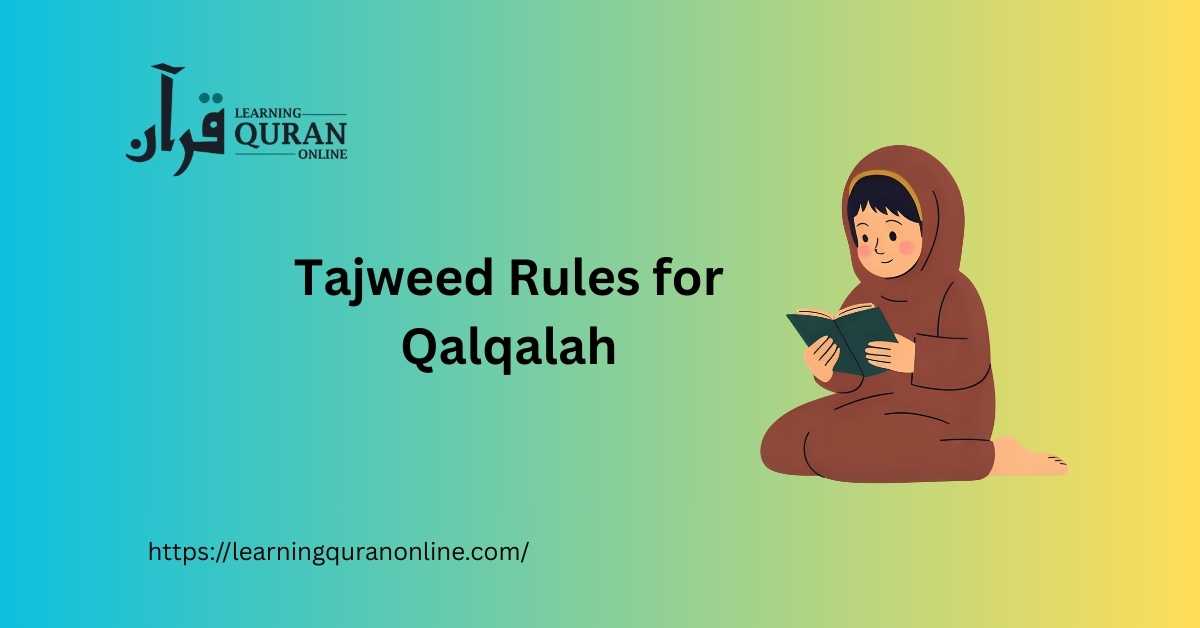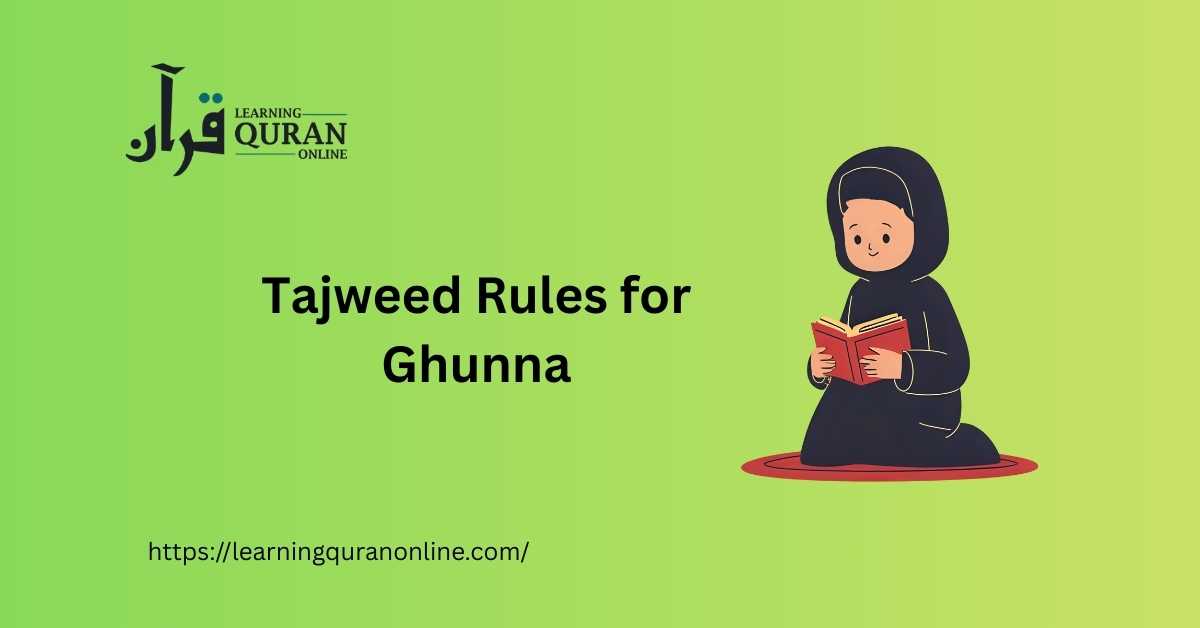Table of Contents
ToggleWhat is Iqlab? (Iqlab Meaning)
Literally, “Iqlab” means conversion or transformation. In tajweed, iqlab refers to the conversion of the sound of noon sakinah (نْ) or tanween into a meem-like sound when the next letter is the letter bā’ (ب). Instead of pronouncing the original “n” sound, the reciter produces a hidden “m” sound with nasalization (ghunnah).
When Does Iqlab Occur? — Basic Condition
Iqlab applies in the following situations:
- Noon sakinah (نْ) followed immediately (in the same word or across a word boundary) by the letter ب (ba).
- Tanween (ــًــٍــٌ) at the end of a word followed immediately by the letter ب (ba) in the next word.
Precise Rule — What Changes in Pronunciation
When iqlab applies:
- The noon sound (n) or the tanween is converted (transformed) into a meem-like (m) sound.
- A ghunnah (nasalization) is applied for two counts (two harakah), the same duration used in other ghunnah rules (e.g., idgham with ghunnah).
- The original noon is not pronounced as a clear “n” anymore; instead you briefly produce the “m” with nasal resonance as you move to the following bā’.
Why Iqlab Is Important (Benefits)
Applying iqlab correctly matters because:
- It preserves correct phonetic distinctions in Arabic and prevents confusing similar sounds.
- It maintains the melodic rules and rhythm of proper tajweed recitation.
- It avoids errors that can change the word-flow or interfere with meaning in some contexts.
Examples of Iqlab (Arabic, Transliteration, Meaning)
Below are simple illustrative examples showing how iqlab works. In each case, notice that noon or tanween becomes an “m” sound plus ghunnah before bā’.
- مِنْ بَعْدِ → pronounced as “mim‑ba’di” with ghunnah (min ba‘di)
- كِتَابٌ بَحْثٌ → pronounced as “kitaabum‑bahth” with ghunnah (kitaabun bahth)
- أَنْبَأَ → in some morphological examples where noon sakinah is followed by bā’ across boundaries, the noon becomes meem-sound with nasalization
Note: The exact appearance of examples in the Mushaf will vary; the important point is the conversion of noon/tanween to a brief meem sound with ghunnah when followed by ب.
Other Relevant Blogs:
- Tajweed Rules for Qalqalah
- Tajweed Rules for Ghunna
- Tajweed Rules for Meem Saakin
- Tajweed Rules for Noon Saakin and Tanween
- Tajweed Rules for Stopping and Starting
- Tajweed Rules for Madd
- Tajweed Rules for Ikhfa
- Tajweed Rules for Idgham
How to Recognize Iqlab in the Mushaf (Quran)
Many tajweed-coded Qur’ans highlight the application of Iqlab. You may see color-coded letters, small signs, or explanatory notes that indicate when noon/tanween should be converted into a meem sound. If your Mushaf does not show signs, use the rule: whenever a noon sakinah or tanween is immediately followed by ب, apply iqlab.
Iqlab vs. Izhar vs. Idgham — Quick Comparison
The noon-related tajweed rules are three: izhar (clear pronunciation), idgham (merging), and iqlab (conversion). A brief comparison helps avoid confusion:
- Izhar: Clear pronouncing of noon when followed by throat letters (ء, هـ, ع, ح, غ, خ).
- Idgham: Merging of noon sound into the next letter when it is one of the idgham letters (ي, ر, م, ل, و, ن) — sometimes with ghunnah and sometimes without.
- Iqlab: Conversion of noon/tanween to meem with ghunnah when followed by ب (ba).
Common Mistakes Learners Make
Many students encounter predictable errors while learning iqlab. Watch out for:
- Pronouncing the original “n” instead of converting to an “m” sound.
- Failing to apply the ghunnah — the sound becomes too short or non-nasal.
- Overly prolonging the ghunnah beyond two counts, which disrupts rhythm.
- Confusing iqlab with idgham when the following letter is one of the idgham letters — remember idgham letters list vs the single bā’ for iqlab.
Practical Steps to Master Iqlab — Practice Routine
A focused practice plan will cement the iqlab rule in your recitation:
- Identify words or phrases in the Qur’an where noon sakinah or tanween is followed by ب (use a tajweed highlighted Quran or a searchable digital copy).
- Listen to skilled reciters (qurrā’) and pay attention to how they nasalize the sound (two counts ghunnah) and slide into bā’.
- Practice slowly, isolating the sounds: say the first word ending with noon/tanween, then say the bā’ word, and pronounce the middle as a nasal “m” for two counts: e.g., “min — ba‘di” → “mim‑(ghunnah)‑ba‘di.”
- Record yourself and compare with good reciters, correcting length and quality of the ghunnah.
- Gradually increase speed while maintaining the rule’s integrity.
Teaching Tips for Instructors
When teaching iqlab to beginners:
- Start with clear visual examples and highlight the letter ب in the follow-up word.
- Use drills with repeated short phrases (word boundary practice helps internalize transition).
- Emphasize the nasal quality (ghunnah) and count it aloud (two counts) during practice.
- Contrast iqlab examples with izhar and idgham examples so students learn to distinguish situations.
When Iqlab Does Not Apply — Exceptions & Boundaries
Iqlab applies only when the next letter is bā’ and the noon is either sakinah or a tanween. If a vowel or different consonant intervenes, or if the noon is part of a prefixed morphological form where different rules apply, iqlab may not be used. Also, context and elisions in recitation affect whether you apply it across word boundaries — follow classical tajweed methodology and your teacher’s guidance.
Resources and Next Steps
To strengthen your command of tajweed rules for iqlab, combine study and supervised practice:
- Use a tajweed-coded Mushaf for visual cues.
- Study short lessons on noon rules (izhar, idgham, iqlab) to compare contexts.
- Practice with audio recitations from renowned qurrā’ and mimic the nasal qualities.
- Take structured tajweed lessons — online or with a qualified tutor — to receive corrective feedback. For remote learners, academies like Learning Quran Online offer tajweed courses with focused practice on rules such as iqlab.
Conclusion — Mastery Through Repetition
Iqlab is a short, specific rule, but mastering it makes a noticeable difference in the quality of Qur’anic recitation. Learn to spot the situation (noon sakinah or tanween followed by bā’), convert the sound into a brief meem with ghunnah for two counts, and integrate the rule into flowing recitation. Regular listening, repetition, and teacher feedback will turn a rule into a natural habit and enrich both the sound and meaning of the Qur’an in your recitation.
For learners serious about tajweed, consistent practice and correct guidance are the keys to progress. Apply the simple steps above, compare your recitation with skilled qurrā’, and seek regular corrective feedback to perfect Iqlab and other tajweed rules.

